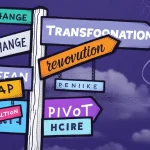More than 60% of market researchers now use AI in their work — up from 39% last year. This significant increase reflects a broader trend within the industry, highlighting how quickly teams are adapting to technological advancements. The jump demonstrates how quickly teams transition from weeks of analysis to answers in hours, enabling them to make more informed decisions at a significantly faster pace. This shift not only enhances efficiency but also empowers researchers to focus on strategic insights rather than getting bogged down in data processing.

U.S. organizations are speeding strategy, creative, and go-to-market choices while cutting manual effort. AI market research tools like GWI Spark, Brandwatch, and Perplexity provide different paths to the same goal: clearer, faster insights.
This guide helps decision-makers compare options and shortlist the right stack for team size, budget, and timeline. We’ll cover surveys and quant, social listening, competitive intelligence, qualitative analysis, research assistants, and trend discovery.
Expect practical takeaways: which features matter, fit-for-purpose use cases, integration notes, and how to measure ROI from faster data to better business outcomes.
Why AI-powered market research matters for today’s decision-makers
Decision-makers need faster, clearer answers, and modern systems shrink weeks of work into hours.
Automated platforms handle collection, cleaning, and analysis, allowing teams to move quickly from raw data to usable insights. This cuts manual work and surfaces trends that matter to product, marketing, and executive teams.
Faster time to insight improves decision accuracy and team collaboration. Natural language queries and automated reports let nontechnical users explore findings and share clear recommendations.
- Scale: process surveys, social text, images, and web signals for a fuller customer view.
- Risk control: repeatable workflows reduce human error and support audit trails.
- Team impact: analysts focus on hypotheses, storytelling, and strategy instead of chores.
| Benefit | Outcome | Best-fit users |
|---|---|---|
| Speed (automated cleaning) | Hours to insight | Product, marketing |
| Scale (multi-format data) | Broader consumer insights | Strategy, analytics |
| Repeatability | Auditable decisions | Compliance, execs |
Most U.S. businesses pair a core survey platform with social listening and a deep research assistant to monitor sentiment, category shifts, and campaign performance continuously.
How AI market research tools deliver value: speed, scale, and smarter insights
Modern platforms turn long, manual studies into fast, iterative cycles that keep teams focused on decisions rather than data wrangling.
From automation to predictive analytics
Automation compresses timelines with templated methods, AI-written questions, quality checks, and live dashboards. Platforms like Quantilope show how a co-pilot can draft and route surveys so studies run faster.
Predictive analytics surfaces trend signals and opportunity sizing. Products such as Market Insights AI and Glimpse help teams prioritize roadmap bets with greater confidence.
Natural language interfaces that democratize research
Chat-style interfaces let marketers, PMs, and execs ask plain questions and get charted answers. Natural language processing powers those queries and links internal files for richer synthesis.
- Multimodal analysis combines text, image, and clickstream inputs.
- Guardrails include question validation, bias checks, and sample controls.
- Integrations with cloud drives let the platform synthesize internal and external data.
| Value | How it works | Outcome |
|---|---|---|
| Speed | Templates, auto-routing, live dashboards | Weeks to hours |
| Scale | Multimodal inputs and cloud sync | Broader, richer data |
| Smarter insights | Predictive signals and natural language queries | Faster, confident decisions for users |
Buyer’s intent and evaluation criteria for selecting tools in the United States
Buyers in the U.S. start tool selection by tying vendor capabilities to clear business outcomes like brand tracking or pricing studies. This keeps evaluations practical and stops teams from paying for unused features.
Aligning tools to quant vs. qual goals
Quant teams need survey automation, tracking, and advanced methods for repeatable analysis. They value scalability and clean microdata exports.
Qual teams need transcription, theme extraction, sentiment tagging, and centralized repositories for customer stories and verbatims.
Data quality, compliance, and trust
Ask vendors how they source, update, and validate datasets. Review sampling frames, weighting, and panel governance.
For U.S. deployments, confirm HIPAA relevance, SSO, audit trails, data retention rules, and vendor security posture. GWI Spark’s monthly surveys from nearly a million respondents across 50+ markets show why representative data matters.
Integration capabilities and total cost of ownership
Prioritize native connectors for CRM, analytics, cloud storage, and project systems to cut swivel-chair work. Evaluate usability across roles: non-technical users need natural language search and guided dashboards; analysts need APIs and exportable microdata.
- Scope must-have outcomes first to avoid overbuying.
- Model TCO: licenses, seats, data pulls, services, and training.
- Run pilots to validate ROI: compare time-to-insight, adoption, and decision impact.
| Selection Factor | What to ask | Outcome |
|---|---|---|
| Data quality | Sampling, weighting, panel governance | Trustworthy insights |
| Integrations | CRM, BI, cloud connectors | Faster workflows |
| Cost | Licensing, add-ons, opportunity cost | Clear ROI |
In short, match capabilities to use case, verify data and compliance, and prioritize integrations. That approach helps U.S. businesses choose market research tools that deliver timely, actionable insights.
ai market research tools: the product roundup overview
This roundup maps leading platforms into buyer-friendly groups so teams can shortlist by goal and input.
Top categories
Surveys & quant — fast study setup, continuous tracking, automated reporting. Examples: GWI Spark, Quantilope, SurveyMonkey Genius, Zappi.
Social listening — text-first sentiment vs. visual recognition for user-generated media. Examples: Brandwatch, YouScan, Hotjar.
Competitive intelligence — change tracking, web extraction, predictive layers. Examples: Crayon, Browse AI, Market Insights AI.
Qualitative analysis — transcription accuracy, theme extraction, multi-language repos. Examples: Speak AI, Sembly.
Trend discovery — early-signal alerts, channel breakdowns, growth trajectories. Example: Glimpse.
Quick-glance mapping: key features and best-fit use cases
| Category | Key features | Best-fit use case |
|---|---|---|
| Surveys & quant | Automated sampling, live dashboards, data visualization | Audience profiling, pricing tests |
| Social listening | Sentiment, image recognition, channel monitoring | Brand reputation, campaign health |
| Competitive intelligence | Site change alerts, price tracking, trend scoring | Benchmarking, competitor moves |
| Qualitative | Transcripts, theme tagging, searchable repository | Customer stories, UX analysis |
- Quick tip: pair one anchor quant platform with complementary listening, CI, and a research assistant to cover blind spots.
- For ad testing use Zappi; for audience profiling use GWI Spark; for pricing and segmentation use Quantilope; for brand reputation use Brandwatch.
Standout survey and quant research platforms
Modern survey platforms give nontechnical users instant access to cited charts and concise findings. Below are four leaders who cover data provenance, advanced methods, guided design, and fast concept testing.
GWI Spark — chat-based insights on robust, global survey data
GWI Spark uses a natural language chat to lower the barrier to quant insights. It taps monthly surveys from nearly a million consumers across 50+ markets.
The chat returns instant, cited answers with charting for stakeholder-ready outputs and exportable visuals for cross-team sharing.
Quantilope — automated advanced methods and a co-pilot for faster studies
Quantilope automates survey creation, advanced methods like conjoint and segmentation, and predictive modeling.
That end-to-end automation speeds brand tracking, pricing studies, and segmentation with repeatable workflows and exports for in-depth analysis.
SurveyMonkey Genius — smarter survey creation and automated analysis
SurveyMonkey Genius guides question design, flags bias, and automates response analysis.
CRM and marketing stack integrations let teams push data to dashboards and keep customer profiles up to date.
Zappi — rapid concept testing and quick reports
Zappi focuses on creative and concept testing with AI Quick Reports that summarize results fast.
It trades no rigor for speed, making it a go-to for agencies and product marketers that need mid-flight campaign optimization.
| Platform | Strength | Ideal buyers |
|---|---|---|
| GWI Spark | Data provenance & natural language access | Audience profiling teams |
| Quantilope | Methodological depth & automation | Pricing and segmentation analysts |
| SurveyMonkey Genius | Ease and integrations | Marketing teams & CRM users |
| Zappi | Speed-to-story for concepts | Agencies & product marketers |
- Exports, dashboards, and collaboration turn quant findings into shareable, actionable insights across departments.
- Continuous tracking and rolling samples scale studies with minimal manual lift for fast updates.
Social listening and sentiment analysis leaders
Social listening platforms turn raw online chatter into clear signals brands can act on.

Brandwatch — real-time sentiment, trend discovery, and multilingual coverage
Brandwatch supports Boolean queries across millions of posts and surfaces sentiment in real time.
It adds entity recognition, historical archives, and AI summaries to speed narrative building for PR and marketing.
YouScan — image recognition and visual content analysis at scale
YouScan decodes logos, scenes, and objects in user images that text-only monitoring misses.
That visual layer improves creative testing and shows how customer visuals shape brand perception across social media.
Hotjar — behavior analytics with AI surveys and friction detection
Hotjar combines heatmaps, session recordings, and on-site surveys to diagnose conversion friction.
Use it to link social conversations to on-site experience and refine messaging that drives action.
Morning Consult — public opinion tracking and demographic breakdowns
Morning Consult processes large-scale survey data with fine demographic cuts and short-term forecasts.
Its dashboards fit brand tracking, public opinion monitoring, and planning for emerging trends across regions.
| Vendor | Core strength | Best-fit use case |
|---|---|---|
| Brandwatch | Boolean queries, multilingual sentiment, archives | Enterprise reputation monitoring, crisis detection |
| YouScan | Heatmaps, recordings, and AI surveys | Creative testing, visual campaign analysis |
| Hotjar | Brand tracking, public opinion, and planning | Conversion diagnostics, UX optimization |
| Morning Consult | Large survey samples, demographic forecasting | Brand tracking, public opinion and planning |
Practical tip: align listening taxonomies to brand pillars, competitors, and campaign themes so outputs feed creative testing, media planning, and PR playbooks.
Competitive intelligence and market tracking
Competitive tracking turns scattered web signals into clear, action-ready briefings for sales and product teams.
Crayon runs always-on monitoring of competitor websites, pricing, campaigns, and messaging. It synthesizes changes into battle cards and executive summaries that sales and enablement can use immediately.
Browse AI provides no-code web extraction for prices, reviews, and promotional shifts. It’s easy to set up feeds and analytics pipelines so pricing and revenue operations spot trends and respond to promotions fast.
Market Insights AI aggregates broad data and applies predictive analytics to quantify opportunity sizes and surface early trend signals. That helps product and marketing prioritize bets with evidence.
- Governance: standardize taxonomies for competitor names, feature sets, and pricing models for consistent comparisons.
- Connect CI outputs to GTM — arm product marketing, sales, and enablement with narratives and counter-messaging.
- Cadence: weekly digests for sales, monthly leadership readouts, and quarterly deep dives for roadmap planning.
- Integrate CI feeds with BI dashboards so insights sit beside funnel and revenue metrics for faster alignment.
- Respect ethics and compliance when scraping and monitoring to protect reputation while staying informed.
| Capability | What it delivers | Primary users |
|---|---|---|
| Always-on tracking | Battle cards, alerts, executive summaries | Sales, product marketing |
| No-code extraction | Price shifts, review trends, promo intel | Revenue ops, pricing analysts |
| Predictive scanning | Opportunity sizing, early trend signals | Strategy, product leadership |
Qualitative research and voice-of-customer analysis
Voice-of-customer programs capture lived experience, then convert that input into clear themes and actions.
Qualitative platforms turn interviews, focus groups, and open feedback into structured themes and sentiment. They speed data analysis by tagging topics, entities, and emotional tone.
Speak AI transcribes audio and video, extracts topics, keywords, and entities, and performs sentiment analysis. It builds searchable visual repositories so teams share concise, evidence-based narratives.
Sembly links multiple meetings and notes. It surfaces cross-meeting patterns, risks, and action items. Multilingual transcription and speaker ID help diverse U.S. users trust the output.
- Centralize a VoC repository for calls, field notes, and studies.
- Use themes to shape surveys and to validate stories at scale.
- Follow consent protocols, secure storage, and role-based access for compliance.
| Capability | Speak AI | Sembly |
|---|---|---|
| Transcription | Accurate audio/video | 45+ languages, meeting focus |
| Outputs | Topics, entities, visual repo | Summaries, tasks, cross-meeting trends |
| Use case | Qualitative coding & stakeholder decks | Program-level conversation tracking |
Tip: share short highlight clips and AI summaries to humanize insights for execs and frontline teams.
Deep research assistants and knowledge copilots
Deep research copilots speed desk work by turning scattered references into cited, ready-to-use briefs.

Perplexity blends large models with live web search to deliver cited answers, reading lists, and source links. Its deep research mode compiles multi-source reports that save analysts hours on literature reviews and market research scans.
ChatGPT shines for exploratory analysis, brainstorming, and report drafting. Use natural language prompts to clean datasets, summarize findings, and integrate outputs into Slack, Docs, or BI workflows for faster team collaboration.
Appen supplies annotated, high-quality datasets for language processing and machine learning. That upstream data improves model accuracy for transcription, sentiment tagging, and other production features used by users across media and marketing teams.
- Quick wins: cited briefs cut ramp-up time; deep modes create literature-ready reports.
- Combine sources: link public web results with proprietary decks and surveys for richer context.
- Governance: enforce citation checks, fact verification, and permission controls when blending internal and external data.
Tip: embed assistants into daily workflows and keep a library of vetted prompts and templates to produce consistent, repeatable insights with the preferred research platform and research tools.
Trend discovery and forecasting to stay ahead
Seeing trend momentum before it peaks helps teams align product, media, and messaging. Early detection changes strategy from chasing attention to shaping demand.
Glimpse — early trend detection, alerts, and channel breakdowns
Glimpse surfaces emerging trends with growth metrics, automated alerts, and clear dashboards. It shows growth trajectories for keywords and categories so teams can monitor momentum at a glance.
The platform breaks down which channels drive traction — search, social media, or niche communities. That channel view guides media mix and content placement decisions.
Using trend signals to inform product development and marketing timing
Why early trend detection matters: capturing demand sooner improves launch outcomes and media efficiency. Trend alerts let product and merchandising teams test formats and SKUs before full production.
- Use weekly scans for content planning and quick tests.
- Run monthly syntheses for leadership roadmaps and product bets.
- Integrate signals with quant platforms to validate trend salience.
- Combine channel breakdowns with social listening to understand narratives.
Guardrails against hype: track sustained signals, seasonality, and competitor moves. Favor trends that show steady growth, clear audience segments, and repeatable demand.
| Capability | What it delivers | Action |
|---|---|---|
| Alerts & dashboards | Real-time upticks, growth curves | Trigger experiments |
| Channel breakdowns | Search vs. social vs. niche | Optimize media mix |
| Predictive analytics | Early signals of trajectory | Inform product timing |
Use trend signals to map key trends to audience segments and creative angles. That approach helps teams stay ahead with timely product releases and resonant campaigns.
How to choose: matching use cases to the right platform
Choose platforms by the outcome you need—audience clarity, creative lift, or competitive edge—rather than by feature lists.
Audience profiling and brand tracking
When audience clarity is the goal, prioritize robust survey panels and fast dashboards. GWI Spark offers broad panels and quick segmentation for reliable survey creation.
Pick vendors that export clean microdata and sync with CRM so teams can act on profiles.
Campaign optimization and creative testing
For campaign work, use rapid concept testing. Zappi and similar platforms summarize creative tests in minutes.
Natural language query interfaces help marketing teams ask plain questions and get stakeholder-ready charts fast.
Competitive benchmarking and pricing strategy
Competitive intelligence needs always-on monitors and sales-ready battle cards. Crayon fits that use case.
For pricing strategy, run advanced quant methods (conjoint, Van Westendorp) in Quantilope to turn tests into revenue scenarios.
- Combine methods: run focus groups or interviews on Speak AI or Sembly to shape hypotheses, then scale with quant.
- Speed + depth: pair Perplexity and ChatGPT for synthesis and drafts, then validate with category-specific platforms.
- Integration checklist: test exports, connectors, and permissioning to ensure compliance with IT and existing workflows.
| Priority | Best-fit platform | Why it fits |
|---|---|---|
| Audience profiling | GWI Spark | Large panels, automated dashboards |
| Creative testing | Zappi | Fast concept reports, quick turnarounds |
| Pricing & segmentation | Quantilope | Conjoint, segmentation, predictive scenarios |
Final tip: map desired decisions to platforms, run short pilots, and measure time-to-insight. That keeps purchases practical and focused on outcomes that help product development, marketing teams, and customer-facing users.
Making it work: integrations, workflows, and visualization
Integrations and clear workflows turn isolated findings into decisions that stick across teams. Connectors, governance, and repeatable outputs ensure market research moves from collection to action without friction.
Connecting to CRM, BI, and analytics stacks
Build an integration blueprint that routes study outputs to BI dashboards for execs, CRM for revenue teams, and a document library for long-term archives.
Browse AI can feed scraped signals into analytics platforms, and SurveyMonkey Genius syncs survey pushes with CRM and marketing systems to keep customer profiles current.
Dashboards, exports, and stakeholder-ready visuals
Decide when to use native dashboards for speed and when to push multi-source storytelling into custom BI for depth.
- Standard exports: PPT, CSV, and chart images for presentations.
- API access for automation and scheduled reports to reduce ad hoc requests.
- Alerts and email digests keep stakeholders informed without extra logins.
| Option | When to use | Outcome |
|---|---|---|
| Native dashboards | Fast turnarounds | Quick stakeholder buy-in |
| Custom BI | Multi-source storytelling | Deeper cross-functional analysis |
| Exports & API | Automation & archives | Repeatable delivery |
Practical checklist: enforce SSO, audit logs, and data governance; adopt standard schemas for studies, tags, and segments; build a reusable component library of charts and narratives; pilot integrations with a small team, then scale. These steps make market research repeatable, secure, and valuable to users across product, sales, and marketing.
Measuring ROI: from actionable insights to business outcomes
ROI begins when insights shift team behavior and change outcomes within weeks. Start by defining simple, measurable metrics that tie analysis to dollars, days saved, or improved KPIs.
Speed, accuracy, and throughput matter most. Track time-to-insight reductions, percent improvement in decision accuracy, and studies completed per analyst.
Speed to insight, decision accuracy, and team efficiency
Measure how platforms like GWI Spark, Quantilope, Zappi, and SurveyMonkey Genius shorten survey cycles and automate reporting.
- Time-to-insight: average hours or days from field close to stakeholder-ready slides.
- Decision accuracy: tie recommendations to A/B lifts, conversion changes, or product adoption.
- Throughput per analyst: count studies handled after automating prep and analysis.
Scaling research without scaling headcount
Automate data prep, theme tagging, and templated reports so teams run more studies with the same staff.
Attribute value to risk mitigation: early detection of sentiment or pricing shifts (Brandwatch, Glimpse, Crayon) can prevent costly missteps.
| Metric | What to measure | Business outcome |
|---|---|---|
| Adoption | Active users, dashboard views | Behavior change |
| Cost offsets | Agency spend saved, fewer manual decks | Lower operating cost |
| Impact | Brand lift, conversion, NPS | Revenue & retention |
Run short pilots with clear baselines and executive dashboards that show weekly or monthly ROI. Close the loop by linking insights to KPIs so businesses can sustain investment in consumer insights and the research teams that produce them.
Conclusion
Fast, focused research turns questions into action. Platforms like GWI Spark, Quantilope, SurveyMonkey Genius, Zappi, Brandwatch, and Glimpse compress timelines, enrich context, and put clear results in front of more users.
Shortlist one anchor quant platform and pair it with social listening, CI, qualitative, assistant, and trend capabilities. Validate data quality, confirm integrations, and model total cost and ROI before you buy.
Pilot small: run a brand tracking, concept test, or competitor watch, and measure adoption and business KPIs. That creates quick wins and builds support.
With the right platform mix and processes, you can deliver actionable insights, ahead of trends, and make research a growth engine for U.S. businesses.








